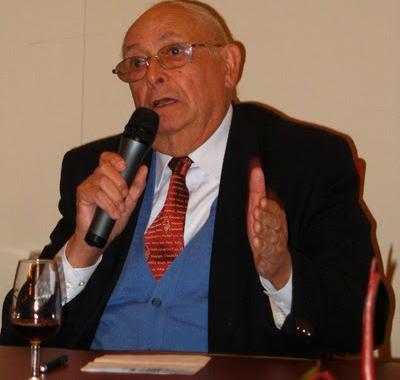
“Relationship between the production of noble wines and their organoleptic properties”.
The Académie Internationale du Vin exists because it was founded on the initiative of Constant BOURQUIN around the word “wine”, to which two notions are attached: natural and noble. These two words represent the lungs of our Academy, and they have never ceased to fuel our work, which has always taken a scientific approach to the subject, in order to make objective what is still subjective. This is how we study situations, practices and processes to ensure that their use serves wine that is both natural and noble. This is the precise mindset that drives us, and which has been perfectly established around the work we do, and in particular that of Professor Jean BRANAS. But there are times when certain aspects need to be reiterated, particularly to members who have joined us recently and have not yet had time to familiarize themselves with the Academy’s work.
LE VIN NOBLE
These are natural wines made from noble grape varieties and plots. The conditions surrounding this production have been defined in four points:
1- The wine’s personality:
This is based on its essential characteristics, its analytical characteristics and its aptitude for ripening.
2- Winemaking conditions:
The raw material is defined, as are the corrections made, the pre-fermentation phases, the winemaking method and the conditions for maturing the wine.
3- The origins of the wine
They call on knowledge of the geographical location, climate, geology and even pedology, i.e. the environment in which the wine is produced and the grape varieties chosen accordingly.
4- Wine production conditions
We specify the date and type of planting, rootstocks, soil preparation, pruning, sanitary protection and soil maintenance. Fundamentally, we first had to define the personality of the wine, and then analyze all the factors that would ensure that they belonged to conditions, gestures and practices suited to the production of a noble wine. As a result, every human choice must be made, and can only be made, if we know our wine, and if we have learned to understand the evolving characteristics of its personality, because a noble wine is not static, and its silhouette is modulated each year by a climate that is never identical.
As a result, we realize that this personality can only be established through knowledge of the sensory characteristics of the wines. That’s why our academy has set out to define the principles and conditions of wine tasting, while proposing a vocabulary of several hundred words (414 apart from colors) which have been translated into four languages (Spanish, Italian, German, English). Tasting techniques have also been clarified. These have been compiled in a guide sheet, together with an assessment of the choice of tasters. Our members can refer to the document “Le Vin Noble” for further details. In this way, we have shown that it is only through knowledge of the object and its emotional content that we can continue to serve natural, noble wine, so that it remains true to its original lineage.
Our Academy could, if its members so wished, promote awareness and even training on the subject, in order to develop the production of great wines of noble origin, as our late President Dr. André Parcé emphasized in 1996. Knowledge and proper use can only evolve through the complicity of the object, which remembers the principles of noble wine production, and the subject, who possesses the understanding and culture. Hence the need to transmit this relationship, which we know so well, by means of a pedagogical approach. In this way, we can help those who so desire to differentiate between what is good and what is right.
VIN NOBLE
Natural wine -> Noble grape varieties and parcels
1 WINE PERSONALITY
– Sensory characteristics
– Analytical characteristics
– Ripeness
II PREPARATION CONDITIONS
– Raw material, the grape
– Corrections
– Pre-fermentation phase
– Winemaking method
– Aging the wine
III THE ORIGINS OF WINE
– Geographical location
– Geology
– Climate (fragmentation over a century)
– Grape varieties
IV PRODUCTION CONDITIONS
– Planting date and type
– Rootstocks
– Soil preparation
– Pruning methods
– Sanitary protection
NATURAL WINE <–> NOBLE WINE
LEARNING TO TASTE
(1) For each descriptor, the taster assigns a score from 1 to 5 to specify its intensity, and indicates its positive or negative value by noting from – 5 to + 5.
